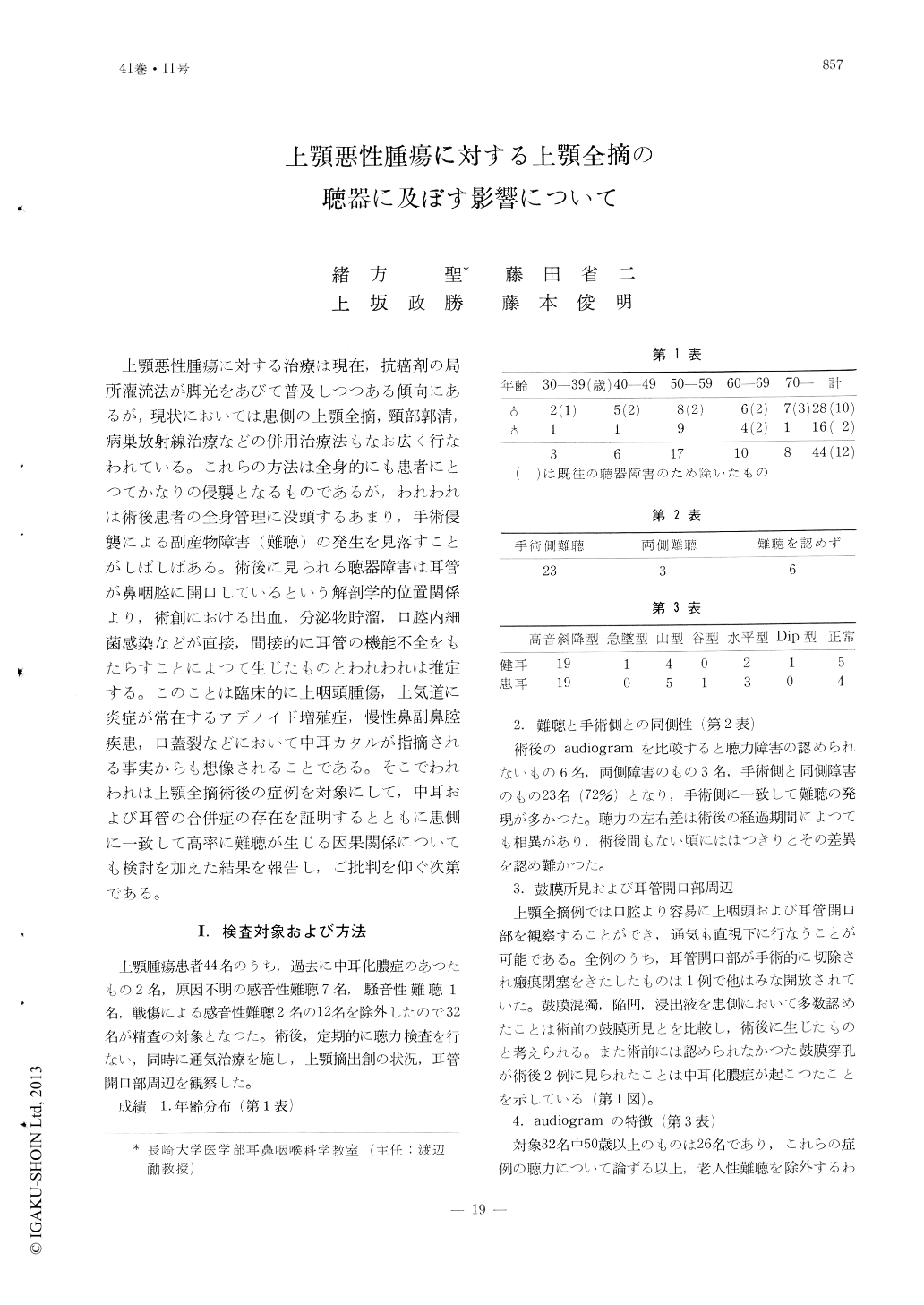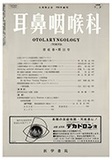Japanese
English
- 有料閲覧
- Abstract 文献概要
- 1ページ目 Look Inside
上顎悪性腫瘍に対する治療は現在,抗癌剤の局所灌流法が脚光をあびて普及しつつある傾向にあるが,現状においては患側の上顎全摘,頸部郭清,病巣放射線治療などの併用治療法もなお広く行なわれている。これらの方法は全身的にも患者にとつてかなりの侵襲となるものであるが,われわれは術後患者の全身管理に没頭するあまり,手術侵襲による副産物障害(難聴)の発生を見落すことがしばしばある。術後に見られる聴器障害は耳管が鼻咽腔に開口しているという解剖学的位置関係より,術創における出血,分泌物貯溜,口腔内細菌感染などが直接,間接的に耳管の機能不全をもたらすことによつて生じたものとわれわれは推定する。このことは臨床的に上咽頭腫傷,上気道に炎症が常在するアデノイド増殖症,慢性鼻副鼻腔疾患,口蓋裂などにおいて中耳カタルが指摘される事実からも想像されることである。そこでわれわれは上顎全摘術後の症例を対象にして,中耳および耳管の合併症の存在を証明するとともに患側に一致して高率に難聴が生じる因果関係についても検討を加えた結果を報告し,ご批判を仰ぐ次第である。
The authors tested otoscopical and audiologi cal findings of 32 patients who were operated on by the total resection of maxilla because of its malignant tumor.
Homolateral hearing loss was found in 72 per cent of cases. The origins of their hearing impairment were considered due to the serous otitis media as the result of tubal dysfunction and also due to the supprative otitis media.
In combination with the existing presbycusis, this kind of conductive deafness appeared as the mixed type of hearing loss. The threshold of the impaired hearing was not always fixed. It might be fluctuated according to the conditions of nasopharyngeal space.

Copyright © 1969, Igaku-Shoin Ltd. All rights reserved.


